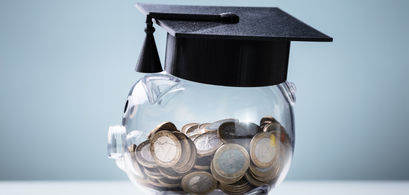- 29% of students say they have £50 or less after paying their bills and rent each month.
- A 50% increase is seen in students taking loans from their families since January.
- Similar rises in students using their savings, credit cards and credit schemes like Klarna.
It’s a common stereotype: the hard-partying uni student spending every night drinking. But with the cost of living crisis in full swing, this may be a thing of the past.
New research reveals that nearly a third of students now have £50 or less to spend on luxuries each month - and many appear likely to rack up considerable debts in the coming months.
The cost of living hits students hard
With inflation at a 40-year high, the cost of living crisis is impacting everybody. But new research shows how hard students have been hit. 44% of students are 'not confident at all' that their student loan or grant will be enough to cover their energy bills, with 37% saying they are either ‘very’ or ‘extremely’ concerned about being able to cope financially.
As a result, 29% of students say they have £50 or less after paying their bills and rent each month. There has also been a nearly 50% drop in the number who report having over £500 at their disposal.
In the short term, the biggest consequence will be on students’ social lives. 77% of respondents said that they had cut back on socialising due to the cost of living crisis - with just 4% saying they had not cut back on anything. 73% have cut back on ‘luxury items’ and 69% have cut back on clothes.
While these are certainly not ‘essential’ factors, the implications for students’ mental health could be severe. The current student population has spent some of their most pivotal years in lockdowns, and without the money to attend social events, they may feel more isolated than ever.
Many students have started using digital banks to save money on lower fees and rates.
However, the longer term implications of these financial struggles may be more worrying still.
Staying afloat with credit
There has been a nearly 50% increase in students taking loans from their families since January, rising from 15% to 29%. During the same period, there’s been a 50% increase in students using credit cards (22% to 33%); a 50% increase in the use of bank loans (8% to 12%); and nearly the same rise in the use of credit schemes like Klarna (13% to 24%).
Of course, there is nothing inherently wrong with any of this. But increased credit usage as a means of staying afloat threatens to put many into long-term debt cycles - or risk harming their credit scores.
This research highlights the risks students face during the cost of living crisis. But it also points to an opportunity for financial education. We must ensure students understand the implications of credit schemes and bank loans - not just to avoid long-term harm, but to help them become more financially capable when they enter the world of work.Luke Eales, CEO of Moneyzine.com
Contributors
.jpg)




